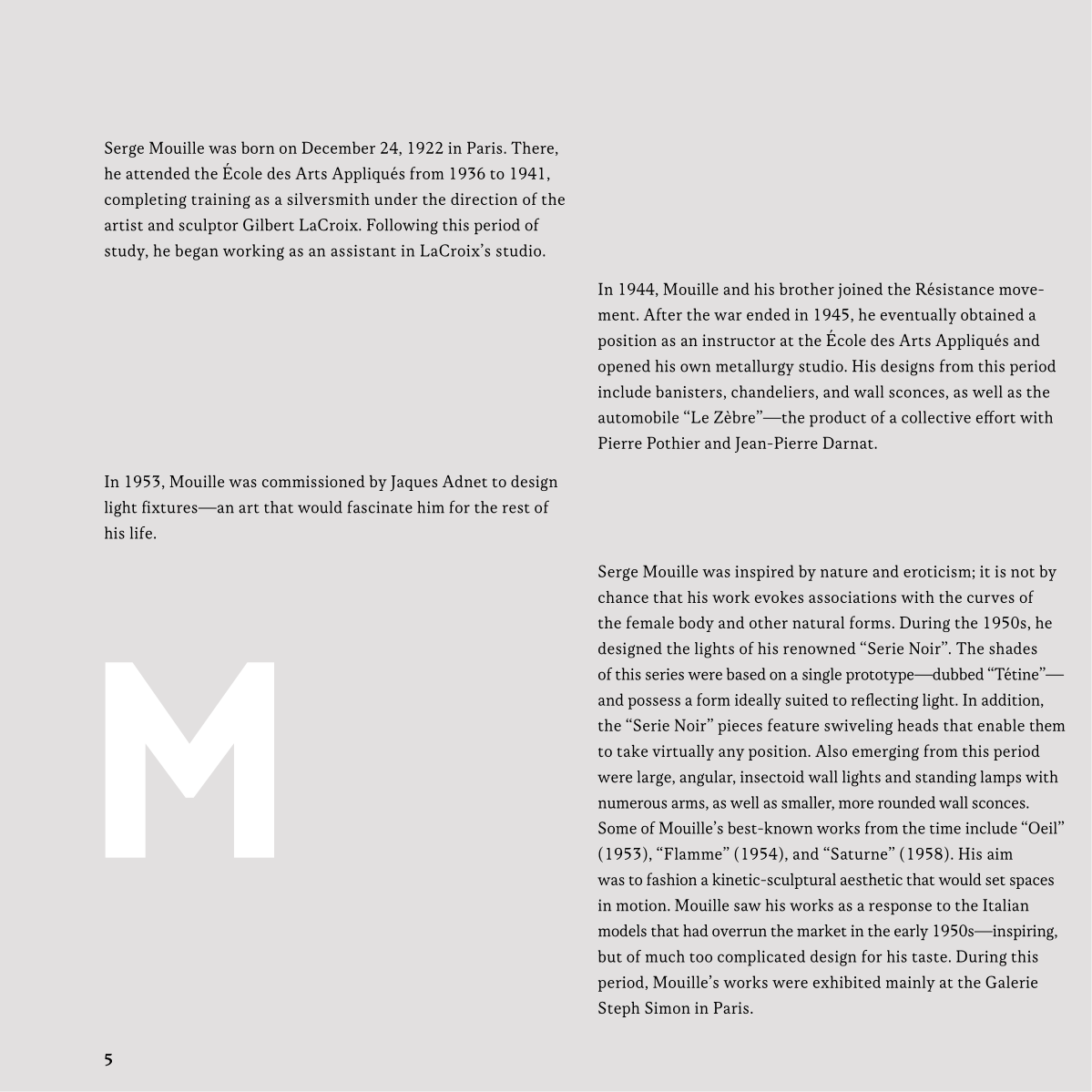Serge Mouille was born on December 24, 1922 in Paris. There,
he attended the École des Arts Appliqués from 1936 to 1941,
completing training as a silversmith under the direction of the
artist and sculptor Gilbert LaCroix. Following this period of
study, he began working as an assistant in LaCroix’s studio.
In 1944, Mouille and his brother joined the Résistance move-
ment. After the war ended in 1945, he eventually obtained a
position as an instructor at the École des Arts Appliqués and
opened his own metallurgy studio. His designs from this period
include banisters, chandeliers, and wall sconces, as well as the
automobile “Le Zèbre”—the product of a collective effort with
Pierre Pothier and Jean-Pierre Darnat.
In 1953, Mouille was commissioned by Jaques Adnet to design
light fixtures—an art that would fascinate him for the rest of
his life.
Serge Mouille was inspired by nature and eroticism; it is not by
chance that his work evokes associations with the curves of
the female body and other natural forms. During the 1950s, he
designed the lights of his renowned “Serie Noir”. The shades
of this series were based on a single prototype—dubbed “Tétine”—
and possess a form ideally suited to reflecting light. In addition,
the “Serie Noir” pieces feature swiveling heads that enable them
to take virtually any position. Also emerging from this period
were large, angular, insectoid wall lights and standing lamps with
numerous arms, as well as smaller, more rounded wall sconces.
Some of Mouille’s best-known works from the time include “Oeil”
(1953), “Flamme” (1954), and “Saturne” (1958). His aim
was to fashion a kinetic-sculptural aesthetic that would set spaces
in motion. Mouille saw his works as a response to the Italian
models that had overrun the market in the early 1950s—inspiring,
but of much too complicated design for his taste. During this
period, Mouille’s works were exhibited mainly at the Galerie
Steph Simon in Paris.
M
5


